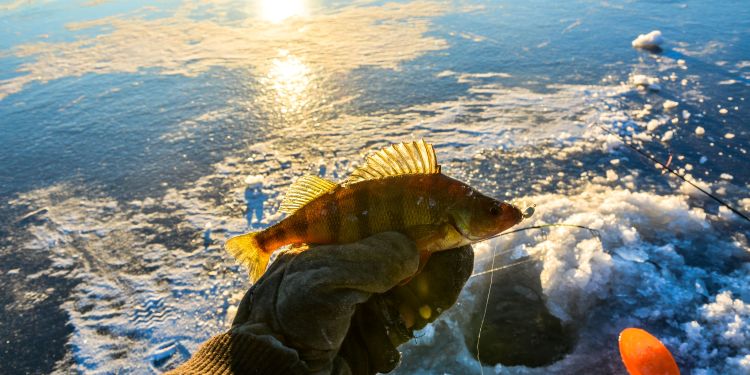Ice fishing is more than just a winter pastime—it’s an art form that requires skill, patience, and a deep understanding of the frozen environment. For experienced anglers, the thrill of ice fishing lies in the challenge of outsmarting fish in some of the harshest conditions. If you’re ready to take your ice fishing game to the next level, this guide will explore advanced techniques, tools, and strategies to help you land more fish and make the most of your time on the ice.
Why Advanced Ice Fishing Techniques Matter
As an experienced angler, you already know the basics: drilling holes, setting up tip-ups, and using live bait. But to consistently succeed in ice fishing, you need to refine your approach. Advanced techniques allow you to adapt to changing conditions, target specific species, and increase your chances of success. Whether you’re chasing trophy walleye, elusive lake trout, or aggressive panfish, these strategies will give you the edge you need.
1. Mastering Electronics: Fish Finders and Underwater Cameras
Modern technology has revolutionized ice fishing. Fish finders and underwater cameras are no longer optional—they’re essential tools for serious anglers.
- Fish Finders: These devices use sonar to locate fish and map the underwater terrain. Look for models with GPS integration to mark productive spots and track your movements on the ice.
- Underwater Cameras: A camera lets you see exactly what’s happening below the surface. Use it to observe fish behavior, identify species, and fine-tune your presentation.
Pro Tip: Use your fish finder to locate suspended fish, which are often overlooked by anglers who focus solely on the bottom.
2. Fine-Tuning Your Presentation
Fish are more lethargic in cold water, so your presentation needs to be precise and enticing.
- Jigging Techniques: Experiment with different jigging motions, such as aggressive snaps, subtle twitches, or slow lifts. Match your jigging style to the mood of the fish.
- Lure Selection: Use smaller, more natural-colored lures in clear water and brighter, larger lures in stained water. Glow-in-the-dark lures can be highly effective in low-light conditions.
- Live Bait Enhancements: Tip your jigs with live bait like minnows, waxworms, or maggots to add scent and movement.
Pro Tip: Vary your retrieve speed and depth until you find what triggers bites.
3. Understanding Fish Behavior in Winter
Fish behave differently in winter, and understanding these patterns is key to success.
- Thermoclines and Oxygen Levels: Fish often congregate near areas with higher oxygen levels, such as inflows or underwater springs. Use your fish finder to locate these spots.
- Feeding Windows: Fish are most active during low-light periods, such as dawn, dusk, and overcast days. Plan your trips accordingly.
- Structure and Cover: Focus on underwater structures like drop-offs, weed beds, and rock piles, where fish are likely to hold.
Pro Tip: Keep a log of your catches, including time of day, weather conditions, and location. Over time, you’ll identify patterns that can guide your future outings.
4. Drilling Strategies for Success
Drilling holes is more than just a means to an end—it’s a strategic part of ice fishing.
- Grid Drilling: Drill a series of holes in a grid pattern to cover a large area. This allows you to quickly locate active fish.
- Depth Variations: Drill holes at different depths to target fish suspended at various levels in the water column.
- Mobility: Stay mobile and be willing to move if you’re not getting bites. Portable shelters and lightweight gear make it easier to relocate.
Pro Tip: Use an auger with a sharp blade to save time and energy when drilling through thick ice.
5. Targeting Specific Species
Each species requires a unique approach. Here’s how to target some of the most popular ice fishing species:
- Walleye: Focus on low-light periods and use live minnows or jigging spoons. Target depths of 15-30 feet near structures.
- Lake Trout: Fish deep waters (40-100 feet) and use large, flashy lures or live bait. Vertical jigging is highly effective.
- Panfish (Bluegill, Crappie): Use small jigs tipped with waxworms or spikes. Fish shallow waters (5-15 feet) near weed beds.
- Northern Pike: Set tip-ups with large live bait or dead bait. Target shallow bays and weed edges.
Pro Tip: Research the specific habits and preferences of your target species before heading out.
6. Staying Safe and Comfortable
Advanced ice fishing isn’t just about catching fish—it’s also about staying safe and comfortable in extreme conditions.
- Ice Safety: Always check ice thickness (at least 4 inches for walking, 6-8 inches for shelters) and carry safety gear like ice picks and a flotation suit.
- Dress in Layers: Wear moisture-wicking base layers, insulating mid-layers, and a waterproof outer layer to stay warm and dry.
- Shelter Options: Invest in a high-quality portable shelter to protect yourself from the elements. Look for features like insulation, ventilation, and easy setup.
Pro Tip: Bring a portable heater to extend your fishing time and stay comfortable during long sessions.
7. Experimenting with Advanced Gear
Upgrade your gear to match your advanced techniques:
- Sensitive Rods: Use rods with fast action and sensitive tips to detect subtle bites.
- Reels with Smooth Drag: A smooth drag system is crucial for fighting larger fish in cold conditions.
- Specialized Line: Use low-visibility fluorocarbon line or braided line with a fluorocarbon leader to increase your chances of landing wary fish.
Pro Tip: Test new gear during shorter trips before relying on it for extended outings.
Conclusion: Elevate Your Ice Fishing Game
Advanced ice fishing is about combining knowledge, skill, and the right tools to outsmart fish in their winter habitat. By mastering electronics, refining your presentation, understanding fish behavior, and staying safe, you’ll not only increase your catch rates but also deepen your appreciation for this unique sport.
So, bundle up, grab your gear, and hit the ice with confidence. With these advanced techniques, you’re ready to tackle the frozen waters like a pro. Happy fishing!






